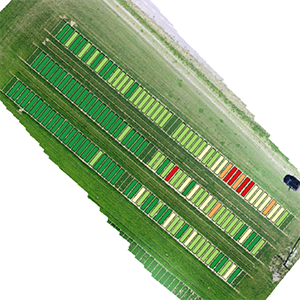Contact
Department of Crop Production Ecology, Crop production science

Drone acquired multispectral and RGB images will be used to estimate various breeding-related traits of red clover. This method would allow to significantly reduce the workload of breeding field operators and reduce the risk of operator bias, as remote sensing provide objective data.
Red clover plays a key role in Sweden, as this forage crop is widely used in ruminant production systems. Red clover breeding focuses on improving yield and persistence while maintaining high forage quality. However, breeding new varieties comes at the cost of time-consuming measurements of various phenological and morphological traits, and even the most recent advances in plant breeding rely on high quality phenotyping data.
Remote sensing provides accurate and objective data that are widely used to retrieve plant traits through the use of mathematical tools. Drone mounted sensors enable data collection at sub centimeter scales, providing high spatial resolution images that are well adapted to the size of plant breeding plots. Drone image acquisition also have several advantages when compared to human scorings: it is fast, objective, and its processing can be automated to generate "on the fly" reports.
This project aims to develop mathematical models that will link drone acquired images of red clover experimental fields with phenological traits that are critical for breeding, including the spring stand density, the crude protein content, the yield and the end of season stand density.
Partners: SLU (Sweden), Lantmännen (Sweden), NIBIO (Norway)
Funding organization: Lantmännens Forskningsstiftelse